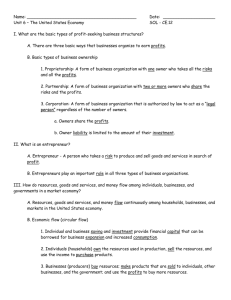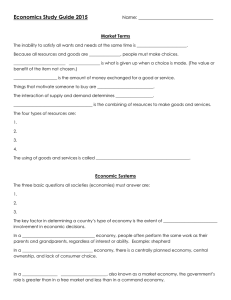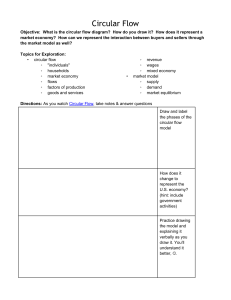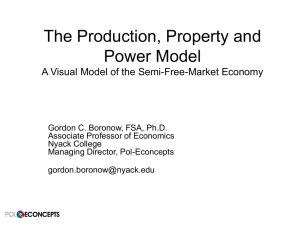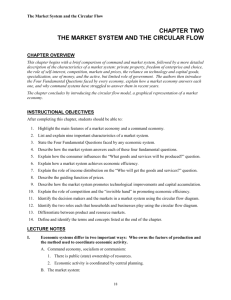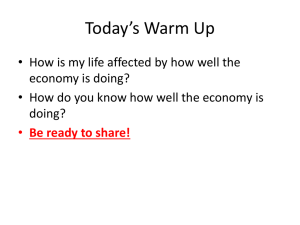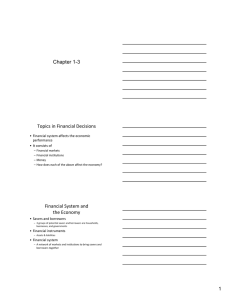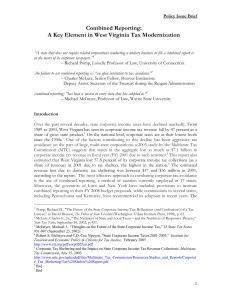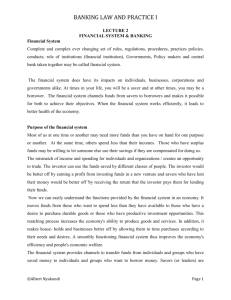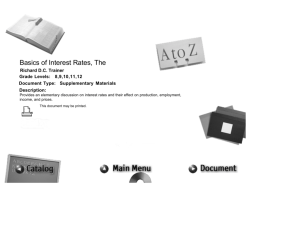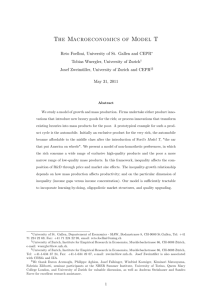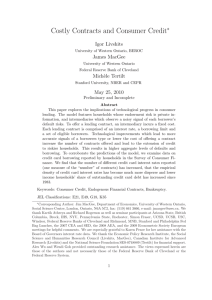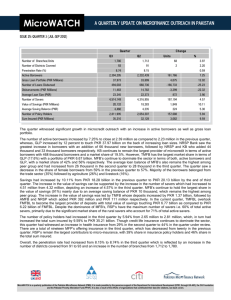CE.12 Study Guide
advertisement
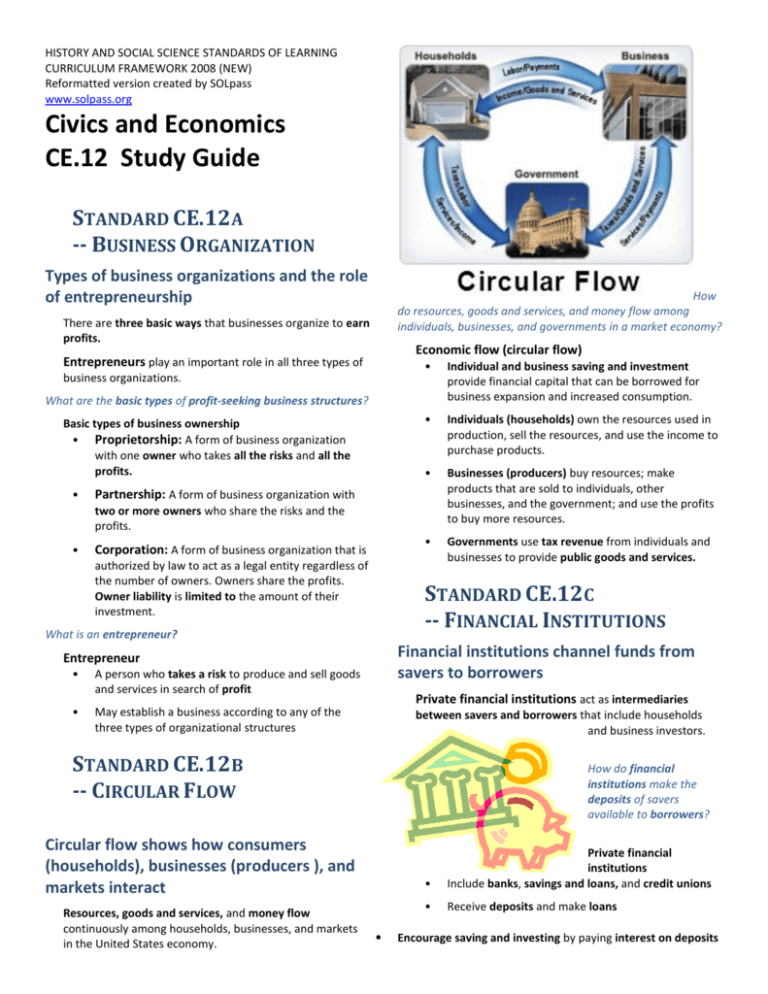
HISTORY AND SOCIAL SCIENCE STANDARDS OF LEARNING CURRICULUM FRAMEWORK 2008 (NEW) Reformatted version created by SOLpass www.solpass.org Civics and Economics CE.12 Study Guide STANDARD CE.12A -- BUSINESS ORGANIZATION Types of business organizations and the role of entrepreneurship How do resources, goods and services, and money flow among individuals, businesses, and governments in a market economy? There are three basic ways that businesses organize to earn profits. Economic flow (circular flow) Entrepreneurs play an important role in all three types of business organizations. • Individual and business saving and investment provide financial capital that can be borrowed for business expansion and increased consumption. • Individuals (households) own the resources used in production, sell the resources, and use the income to purchase products. • Businesses (producers) buy resources; make products that are sold to individuals, other businesses, and the government; and use the profits to buy more resources. • Governments use tax revenue from individuals and businesses to provide public goods and services. What are the basic types of profit-seeking business structures? Basic types of business ownership • Proprietorship: A form of business organization with one owner who takes all the risks and all the profits. • Partnership: A form of business organization with two or more owners who share the risks and the profits. • Corporation: A form of business organization that is authorized by law to act as a legal entity regardless of the number of owners. Owners share the profits. Owner liability is limited to the amount of their investment. STANDARD CE.12C -- FINANCIAL INSTITUTIONS What is an entrepreneur? Financial institutions channel funds from savers to borrowers Entrepreneur • A person who takes a risk to produce and sell goods and services in search of profit • May establish a business according to any of the three types of organizational structures Private financial institutions act as intermediaries between savers and borrowers that include households and business investors. STANDARD CE.12B -- CIRCULAR FLOW How do financial institutions make the deposits of savers available to borrowers? Circular flow shows how consumers (households), businesses (producers ), and markets interact Resources, goods and services, and money flow continuously among households, businesses, and markets in the United States economy. • • Private financial institutions Include banks, savings and loans, and credit unions • Receive deposits and make loans Encourage saving and investing by paying interest on deposits STANDARD CE.12D -- GLOBAL ECONOMY The relationship of Virginia and the United States to the global economy, with emphasis on the impact of technological innovations Virginia and the United States pursue international trade in order to increase wealth. Why do Virginia and the United States trade with other nations? Terms to know • global economy: Worldwide markets in which the buying and selling of goods and services by all nations takes place Reasons that states and nations trade • To obtain goods and services they cannot produce or cannot produce efficiently themselves • To buy goods and services at a lower cost or a lower opportunity cost • To sell goods and services to other countries • To create jobs Virginia and the United States specialize in the production of certain goods and services, which promotes efficiency and growth. What is the impact of technological innovation on world trade? Impact of technological innovations Innovations in technology (e.g., the Internet) contribute to the global flow of information, capital, goods, and services. The use of such technology also lowers the cost of production.
